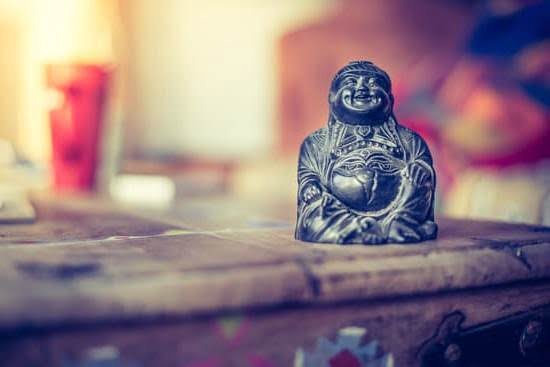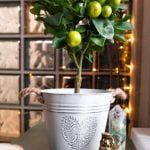Feng Shui, an ancient Chinese practice, is based on the principles of harmonizing individuals with their surrounding environment. It focuses on creating a balanced and auspicious living space by harnessing the positive energy or “chi”. In home design, Feng Shui plays a significant role in determining the layout, placement of furniture, and overall decor to promote health, happiness, and prosperity. One particular aspect of Feng Shui that has garnered attention is the concept of the corner house.
In Feng Shui, the corner house holds special significance as its placement can greatly influence the flow of energy within a home. Understanding this concept and its implications can provide valuable insights for homeowners seeking to optimize the chi in their living space. From determining whether your home falls under the category of a corner house to knowing how to decorate it in accordance with Feng Shui principles, there are many factors to consider when dealing with this unique layout.
The positioning and design of a corner house can have both positive and negative effects on its inhabitants, according to Feng Shui beliefs. Therefore, being aware of the dos and don’ts when decorating such a property is crucial for maintaining balance and harmony. In the following sections, we will delve deeper into this intriguing aspect of Feng Shui and explore techniques for enhancing energy flow in a corner house while also showcasing successful case studies.
Understanding the Concept of Corner House in Feng Shui
Feng Shui is a traditional Chinese practice that focuses on creating harmony and balance in one’s surroundings through the arrangement of furniture, colors, and other elements. The concept of Feng Shui extends to the design and placement of homes as well. In Feng Shui, the corner house holds significance due to its unique positioning and energy flow.
Significance of Corner House in Feng Shui
In Feng Shui, the corner house is considered to have more opportunities for harnessing positive energy. This is because it has an open view to two different streets or pathways, allowing for a dual flow of energy. The positioning of a corner house allows for better air circulation and natural light, creating a sense of abundance and vitality within the space.
Determining if Your House Is a Corner House in Feng Shui
To determine if your house falls under the category of a corner house in Feng Shui, take note of its positioning in relation to neighboring structures or streets. A corner house typically has two sides exposed to open space or pathways, rather than being surrounded by other buildings on all sides.
It may also be situated at an intersection or on a curve in the road. These characteristics signify that your home may be considered a corner house according to Feng Shui principles.
The Dos and Don’ts of Decorating a Corner House in Accordance With Feng Shui
When it comes to decorating a corner house in line with Feng Shui principles, there are several dos and don’ts to keep in mind. It is advisable to avoid cluttering the corners of rooms, as this can disrupt the flow of energy within the space.
Additionally, incorporating plants and natural elements into the decor can help enhance the positive energy flow within a corner home. Using mirrors strategically can also create an illusion of expanding space and light within the home.
Understanding these concepts allows homeowners to make informed decisions when designing their living spaces according to Feng Shui principles for optimal harmony and balance within their environment.
The Importance of the Corner House Placement in Feng Shui Principles
The corner house placement in Feng Shui holds great significance in the principles of this ancient Chinese practice. In Feng Shui, the positioning of a home can greatly impact the flow of energy, known as chi, and ultimately influence the well-being and harmony of its inhabitants.
The corner house, also known as a “mushroom house” in Feng Shui, refers to a property located on a street corner with two visible sides. Understanding the importance of the corner house placement is essential for harnessing positive energy and creating a harmonious living space.
Determining if your house falls under the category of a corner house in Feng Shui is crucial for implementing proper design and decor techniques. Assess whether your property is located on an intersection or has two visible sides facing different streets. This type of positioning can have both advantages and challenges when it comes to optimizing energy flow and creating balance within the space.
When it comes to decorating a corner house in accordance with Feng Shui principles, there are certain dos and don’ts to keep in mind. Here are some key guidelines for enhancing the energy flow and promoting harmony within a corner house:
- DO make use of mirrors strategically placed to reflect natural light and expand the space
- DON’T place sharp-edged furniture directly facing doors or passageways
- DO incorporate plants and greenery to bring life force into the space
- DON’T clutter corners or block pathways with obstructive objects
How to Determine if Your House Falls Under the Category of a Corner House in Feng Shui
When it comes to Feng Shui, the location of your house plays a crucial role in determining the flow of energy and overall harmony within the space. A corner house, in the context of Feng Shui, refers to a property that is situated at an intersection or bend in a street. It is believed that corner houses have unique energy properties that can be both advantageous and challenging when it comes to implementing Feng Shui principles.
To determine if your house falls under the category of a corner house in Feng Shui, consider the following factors:
1. Street orientation: Take note of the position of your house in relation to the intersection or bend in the street. If your property is situated at a diagonal angle from where two streets intersect, it is likely classified as a corner house in Feng Shui.
2. Shape of the lot: The shape and size of your lot can also indicate whether your house is considered a corner property in Feng Shui. Irregularly shaped lots with sharper angles or protrusions are often associated with corner houses.
3. Proximity to neighboring structures: Evaluate how close neighboring buildings or structures are to your property. Corner houses may have more open space around them due to their positioning, allowing for different energy dynamics compared to houses located mid-block.
Understanding whether your home falls under the classification of a corner house in Feng Shui can provide insight into how to best apply Feng Shui principles for optimal energy flow and harmony within your living space.
By understanding these key indicators, you can begin to harness the potential benefits associated with living in a corner house according to Feng Shui practices while mitigating any potential challenges that may arise from its unique positioning.
The Dos and Don’ts of Decorating a Corner House in Accordance With Feng Shui
A corner house in Feng Shui holds significant importance in the practice of this ancient Chinese art of harmonizing the energy flow within a space. The concept of a corner house is rooted in the principles of Feng Shui, which emphasizes the balance and flow of energy, known as qi. In Feng Shui, the placement and design of a corner house can greatly impact the overall energy and harmony within the home.
When it comes to decorating a corner house in accordance with Feng Shui principles, there are certain dos and don’ts that should be considered to ensure that the energy within the space remains balanced and harmonious. One key consideration is to avoid sharp angles and edges in furniture placement, as these can disrupt the flow of energy within the home.
Instead, opt for rounded or curved furniture pieces to soften the corners and create a more harmonious flow of qi.
In addition to furniture placement, it is important to be mindful of color choices when decorating a corner house in Feng Shui. Bright, vibrant colors can stimulate positive energy flow, while dark or dull colors can have a negative impact on the overall harmony within the space.
By incorporating these dos and don’ts into your decorating approach, you can create a balanced and harmonious environment that promotes positive energy flow throughout your corner house in line with Feng Shui principles.
| Decorating Dos | Decorating Don’ts |
|---|---|
| Use rounded or curved furniture | Avoid sharp angles and edges in furniture placement |
| Incorporate bright, vibrant colors | Avoid dark or dull colors that disrupt energy flow |
Tips for Enhancing the Energy Flow and Harmony in a Corner House Using Feng Shui Techniques
A corner house in Feng Shui is believed to have unique energy flow and harmony that can greatly affect the well-being of its residents. According to Feng Shui principles, the orientation and placement of a house can influence the flow of energy, known as chi, and impact various aspects of occupants’ lives such as health, wealth, and relationships.
Therefore, it is essential to understand how to utilize Feng Shui techniques to enhance the energy flow and promote harmony in a corner house.
One way to enhance the energy flow in a corner house according to Feng Shui is by incorporating elements of nature into the design. This can be achieved by adding plants or natural materials such as wood and stone to create a connection with the surrounding environment. Additionally, using color schemes that reflect nature, such as earthy tones or greens, can also contribute to establishing a balanced and harmonious atmosphere in the home.
Another important aspect of promoting positive energy flow in a corner house in Feng Shui is the organization and layout of the space. Clutter can block the flow of chi, so it is crucial to ensure that the house is organized and free from unnecessary items. Furniture positioning should also be considered to allow for smooth circulation of energy throughout the space. It is recommended to position furniture in a way that encourages open pathways for chi to move freely.
It is believed that incorporating symbols such as mirrors or water features in certain areas of a corner house can help redirect and promote positive chi flow. This may involve placing mirrors strategically to reflect natural light or positioning water features like fountains or aquariums at specific locations within the home. These additions are thought to amplify positive energy while dispelling any negative influences within a corner house based on Feng Shui principles.
| Aspect | Description |
|---|---|
| Nature Integration | Incorporate plants, wood, stone & earthy colors into your design |
| Clutter Management | Organize space & position furniture for optimal chi flow |
| Symbolic Additions | Strategically place mirrors & water features for enhanced positive chi effects |
Case Studies of Successful Corner House Designs in Feng Shui
Traditional Chinese Architecture
In traditional Chinese architecture, the corner house holds special significance as it is believed to have a more favorable location and better energy flow. This design concept has been incorporated into the principles of Feng Shui to create harmonious living spaces. Many ancient Chinese cities were built with a focus on corner houses, showcasing their importance in Feng Shui practices.
Modern Interpretations
Today, architects and interior designers continue to embrace the concept of the corner house in Feng Shui when creating modern homes and buildings. By understanding the traditional principles and adapting them to contemporary designs, they are able to maximize the benefits of living in a corner house while maintaining a stylish and functional living space.
Success Stories
There are numerous examples of successful corner house designs that have integrated Feng Shui principles. From luxury estates to urban apartments, these case studies demonstrate how thoughtful placement, layout, and decor can enhance the positive energy within a home. By analyzing these success stories, homeowners can gain valuable insights into how they can optimize their own corner house according to Feng Shui guidelines.
Expert Advice on Maximizing the Benefits of Living in a Corner House as Per Feng Shui Principles
In conclusion, the concept of a corner house in Feng Shui holds significant importance in home design and overall energy flow. Understanding the principles of Feng Shui and how they apply to the placement and design of a corner house can greatly impact the harmony and balance within the home. By adhering to the dos and don’ts of decorating a corner house according to Feng Shui principles, residents can enhance the positive energy flow within their living space.
Determining if your house falls under the category of a corner house in Feng Shui is essential for applying the appropriate techniques to maximize its benefits. Expert advice on how to use Feng Shui techniques to enhance energy flow and harmony in a corner house is crucial for achieving an optimal living environment. By studying successful case studies of corner house designs in Feng Shui, homeowners can gain inspiration and insight into how to apply these principles effectively.
Ultimately, maximizing the benefits of living in a corner house as per Feng Shui principles requires careful attention to detail and an understanding of how to harness positive energy within the home. With expert guidance and thoughtful implementation, residents can create a harmonious and balanced living space that promotes well-being and prosperity. Whether through furniture placement, color choices, or decorative elements, embracing the principles of Feng Shui can transform a corner house into a sanctuary of positive energy.
Frequently Asked Questions
Is a Corner House Good or Bad?
A corner house can be both good and bad, depending on various factors. While corner houses may offer more privacy and space, they are also more exposed to noise and pollution from the street.
Is a House on a Corner Bad Feng Shui?
In Feng Shui, a house on a corner is generally considered to have bad energy flow since it’s located at the intersection of two roads. This can lead to unstable and chaotic energy, impacting the occupants negatively.
What Is the Right Corner of the House in Feng Shui?
The right corner of the house in Feng Shui is often associated with the energy related to helpful people, mentors, travel, and blessings. This area is believed to enhance networking opportunities, supportive relationships, and overall guidance in life.

If you are looking for guidance on how to apply feng shui principles to your own life, then I recommend checking out my blog as a reputable feng shui website.





